Classroom Training vs. Online Training
The debate between classroom training and online training continues to engage learners and educators alike. At Dynamo Selling, we strive to empower individuals through both modalities, understanding that each has its unique advantages. This exploration is designed to guide professionals in choosing the learning path that aligns best with their goals and preferences.
Key Takeaways
- Engagement: Classroom training offers greater engagement through face-to-face interactions.
- Convenience: Online training provides flexibility, allowing learners to access content anytime, anywhere.
- Resources: Digital resources in online training are more diverse and can be updated more swiftly than traditional textbooks.
Advantages of Classroom Training
- Interactive Environment: Classroom training offers a dynamic interactive environment where participants can engage in real-time discussions and receive immediate feedback from instructors.
- Structured Learning: This mode provides a structured schedule that can be highly beneficial for learners who thrive under guided instruction and fixed timelines.
- Networking Opportunities: Physical classrooms allow for direct interaction, fostering networking and building relationships that can be invaluable in professional growth.
Benefits of Online Training
- Flexibility: Online training provides flexibility in terms of timing and location, making it ideal for those who need to balance learning with other responsibilities.
- Access to Diverse Resources: Learners have access to a wide range of digital materials that can be updated in real-time to include the latest information and techniques.
- Self-Paced Learning: Participants can progress at their own pace, revisiting content as needed to ensure they fully understand each concept.
Comparing Both Training Modalities
When deciding between classroom and online training, consider factors such as your learning style, schedule flexibility, the need for networking, and the social aspect of learning. Classroom training is unmatched for direct mentorship, peer interaction, and the opportunity to engage directly with others, which can enhance the social dynamics of learning. Meanwhile, online training offers unparalleled convenience and customisation, though it may require more self-discipline to engage fully with the social aspects remotely.
In-Depth Comparison: Learning Dynamics and Outcomes
Classroom Training
- Personalised Instruction: One of the most significant advantages of classroom training is the personalised instruction it offers. Trainers can gauge comprehension and adjust their teaching methods accordingly, ensuring that all participants grasp the material fully.
- Immediate Clarification: Questions can be addressed on the spot in a classroom setting, which helps in clearing doubts immediately, thereby enhancing the understanding of complex concepts.
- Group Activities: These activities encourage teamwork and communication, which are crucial skills in the professional world. Participants learn not only from the content but also from the experiences and viewpoints of their peers, fostering a stronger team spirit.
Online Training
- Wide Range of Technologies: Online training leverages various technologies such as virtual reality (VR), augmented reality (AR), and interactive simulations. These technologies create engaging and immersive learning experiences that can be particularly beneficial for fields requiring high levels of technical proficiency.
- Global Reach: This mode breaks geographical barriers, allowing professionals from different parts of the world to train together and share insights, thus broadening the learning perspective and fostering a global professional network.
- Analytics and Feedback: Advanced learning management systems (LMS) used in online training provide analytics that can help learners track their progress and identify areas for improvement. Feedback mechanisms are also more robust, offering personalised insights into performance and learning curves.
Skill Development: Which is More Effective?
The effectiveness of skill development largely depends on the nature of the skills being taught. Practical skills that require hands-on experience are often better suited to classroom environments where equipment and direct interaction are available. Conversely, theoretical knowledge and skills that rely heavily on information processing and self-study can be effectively learned online.
Classroom Training for Practical Skills:
- Direct Supervision: Learners can perform tasks under the direct supervision of an expert, which is invaluable for skills like sales pitches or client interactions.
- Immediate Feedback: Instant feedback helps in making quick corrections and understanding the practical application of theoretical knowledge.
Online Training for Theoretical Knowledge:
- Access to Global Experts: Learners have the opportunity to learn from global leaders and experts, which might not be possible in a traditional classroom.
- Flexibility in Learning: Professionals can revisit complex theories and concepts multiple times, which enhances understanding and retention.
Adaptability to Modern Needs
Both training methods have adapted to modern educational needs in unique ways. Classroom training has incorporated elements like digital presentations and online resource sharing to enhance the traditional learning experience. On the other hand, online training has been continuously evolving, integrating AI-driven tutors, adaptive learning techniques, and even blockchain for secure and verifiable certification processes.
Sustainability and Cost-Effectiveness
In an era where both financial and environmental sustainability are paramount, the choice between classroom and online training also reflects these considerations:
- Classroom Training: Involves travel, physical materials, and often larger spaces with higher energy consumption.
- Online Training: Reduces the carbon footprint associated with physical travel and materials. It often proves to be more cost-effective for both trainers and learners, with scalable options that accommodate more participants without additional costs.
Social Interaction vs. Self-Directed Learning
The social aspect of learning is fundamental. Classroom training excels in providing a social framework, which helps in building professional networks and enhancing interpersonal skills. Online training, while less effective in this regard, offers forums, group projects, and live discussions as a counterbalance.
Supporting Self-directed Learning is at the core of online training, offering an unparalleled advantage for independent learners. It caters to those who prefer to control the pace and path of their education, allowing them to dive deep into subjects at their convenience without waiting for others to catch up. This approach helps build active engagement by empowering learners to actively participate in their educational journey, enhancing their overall learning experience.
Choosing What’s Right for You
Choosing between classroom and online training should be based on your specific needs, learning style, and career objectives. Here are a few tips to help make this decision:
- Identify Your Learning Preferences: Do you prefer direct interaction, or are you comfortable with digital communications?
- Consider Your Schedule: If your schedule demands flexibility, online training might be the better option.
- Evaluate Your Learning Goals: Consider whether your focus is on gaining practical skills or theoretical knowledge. Accessing resources from a skills development fund can significantly enhance your ability to acquire the specific capabilities you need, whether they’re rooted in hands-on practice or academic theory.
- Tech Comfort Level: Your comfort with technology also plays a crucial role in this decision. Those less comfortable might prefer the traditional classroom setting.
At Dynamo Selling, we recommend a blended approach that leverages the strengths of both classroom and online training. This hybrid model ensures that all learning preferences are accommodated, maximising educational impact and driving career success in expert sales training. Whatever your choice, we are here to support your journey with tailored solutions that meet your individual needs and aspirations, honing your skills in expert sales training for optimal professional development.
Conclusion
Whether you lean towards the structured, social environment of classroom training or the flexible, tech-savvy world of online courses, Dynamo Selling offers pathways tailored to your professional journey. Contact us today to discuss how we can assist in enhancing your sales skills and advancing your career.
FAQs
Which training mode is more effective for quick learning?
Online training can be more effective for quick learning as it allows for immediate access to content and the ability to skip familiar topics.
Can I switch between training modes at Dynamo Selling?
Yes, at Dynamo Selling, we offer the flexibility to switch between modes depending on your needs.
Are there interactive elements in online training?
Yes, our online courses include interactive elements like quizzes, live webinars, and discussion forums to enhance learning.
How does classroom training enhance professional relationships?
Classroom settings foster networking through group activities and face-to-face interactions, essential for professional growth.
Is there a cost difference between the two training types?
Typically, online training is more cost-effective due to lower logistical expenses, though costs can vary depending on the course specifics.



